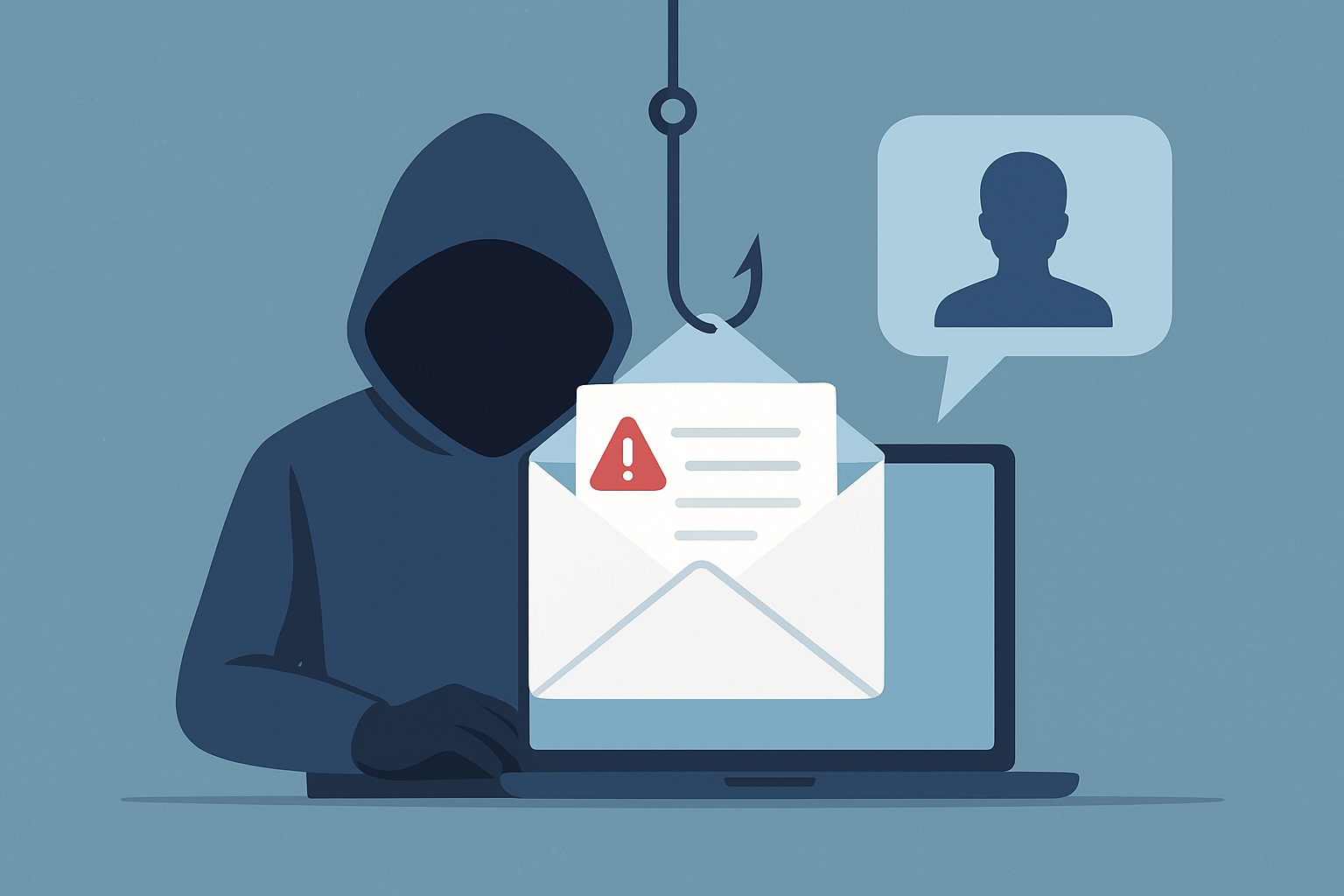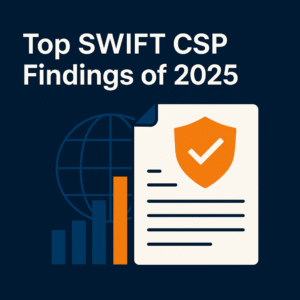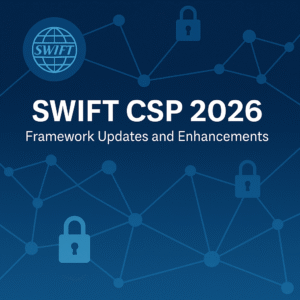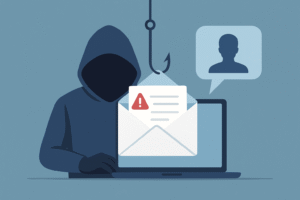
AI Phishing: The Scammers’ New Tool

Not long ago, phishing emails were relatively easy to spot. They were riddled with spelling mistakes, awkward grammar, and suspicious-looking links that gave them away. But today, the rise of generative AI has changed the game completely. In the era of AI phishing, cyber criminals now have access to powerful tools that can produce messages, voices, and even videos so polished and lifelike that many people struggle to tell the difference between what’s real and what’s fake.
Generative AI has transformed countless industries, enabling innovation at speeds we’ve never seen before. Unfortunately, not all of its uses are positive. Criminals are seizing the same technology to create phishing scams that are smarter, more scalable, and much harder to detect. Security filters that once caught obvious errors are now struggling to keep up with flawless AI-crafted content.
What Is Generative AI Phishing?
Generative AI phishing refers to scams created using artificial intelligence tools that can generate text, audio, or even video. Unlike the old scams, where you might receive a clumsy “Dear Customer” email urging you to click on a strange link, AI-generated phishing looks professional and authentic. The writing is smooth and free of errors, the tone matches what you’d expect from a colleague or manager, and the details often feel highly personal. Attackers pull information from social media, corporate websites, and even past data leaks to make their scams convincing. They can also generate content in multiple languages with native-level fluency, and in some cases, the AI behind the scam can even respond in real time, adapting the story as the conversation continues. This makes AI phishing not only harder for individuals to recognize but also far more difficult for automated defenses to block.
Why Are AI Cyber Threats Escalating?
The growth of AI-driven scams is accelerating for a few key reasons. First, AI allows criminals to operate at scale: instead of spending weeks designing a phishing campaign, they can produce thousands of unique, personalized messages in just seconds. Second, the technology allows hyper-personalization, meaning that a scam email might reference a real project you’re working on, a coworker’s name, or even a recent company event, making it much more believable. Third, phishing is no longer limited to email. With AI, scammers are branching into new formats like voice phishing (vishing), SMS phishing (smishing), QR code scams (sometimes called quishing), and even deepfake video calls. Finally, because the cost of using AI is low compared to manual effort, the barrier to entry for cyber criminals has dropped significantly.
Europol’s Internet Organised Crime Threat Assessment (IOCTA) 2025 report warns that AI is rapidly lowering the technical skills needed to launch cyberattacks. Criminals are using voice cloning, deepfake videos, and generative text tools to trick victims with scams that look indistinguishable from legitimate communication. The result is a new generation of phishing attacks that are more scalable, more personal, and harder to defend against than ever before.
How AI is Supercharging Phishing Scams
Think of AI phishing as the classic scam, but on steroids. Attackers are now using sophisticated artificial intelligence to create highly believable and personalized attacks that are much harder to spot than the old-fashioned, error-ridden emails.
Here’s the simple breakdown of their seven-step process:
- Stalking the Target: First, the scammers dig up everything they can about you or your company. They scour social media, public websites, and data from past hacks to gather details like knowing your manager’s name, a specific project you’re on, or how your company talks. This raw data is the fuel for the AI.
- Writing the Perfect Lie: Instead of manually writing a scam email with bad grammar, they use Large Language Models (LLMs), the same tech behind tools like ChatGPT to draft the message. The AI can perfectly mimic a professional tone, avoid typos, and use the exact company jargon, making the email look completely legitimate.
- Making It Personal: The AI takes those details from step one and weaves them into the message. Instead of a generic “Dear user,” it might say, “Please quickly review the ‘Phoenix Project Budget’ attached, as we discussed yesterday.” This specificity builds trust and makes you think, “This must be real.”
- Beyond Text: Voice and Video Deception: These scams don’t stop at email. Attackers can now use AI to clone a voice (vishing) for a phone call or create a deepfake video of an executive. Hearing or seeing a “live” person adds immense pressure and authenticity, making you much more likely to panic and comply.
- Scaling the Attack: The beauty of AI for scammers is that it allows them to create thousands of unique, tailored messages instantly. They can test different versions to see which ones work best and then automatically send them out. It’s personalized spam at a massive scale.
- The Conversational Trap: If you reply to the initial message, the scam isn’t over. AI tools or chat agents are used to craft immediate, context-aware responses. The conversation then evolves, moving from a polite request for info to an urgent, high-pressure demand for a wire transfer or your login credentials.
- The Goal: Ultimately, the objective is the same: to steal your money, credentials, or sensitive data. But because the AI makes the process so fast and the messages so convincing, the attackers are far more likely to succeed.
Real-World Examples of AI Phishing
The consequences are already being felt. In February 2025, Italian executives were tricked into believing they were speaking with Italy’s Defence Minister. A deepfake voice was used to demand ransom payments for allegedly kidnapped journalists, and one executive transferred about €1 million before the fraud was uncovered. In another case earlier this year, YouTube creators were targeted with AI-generated videos of the company’s CEO, Neal Mohan, warning them about changes to monetization policies. Believing the video was genuine, many were directed to fake login portals where their credentials were stolen.
Other victims include an Argentinian woman who lost over £10,000 after being convinced by deepfake videos of actor George Clooney, and a Florida mother who panicked when she received what sounded like a desperate call from her daughter, only it was a cloned voice generated by scammers. According to the American Bar Association, AI-enhanced scams like these are spreading rapidly, and global financial losses from AI-driven fraud reached over $200 million in just the first quarter of 2025.
How To Protect Yourself Against Generative AI Phishing
Despite the sophistication of these scams, there are still ways to protect yourself. The simplest and most effective defense is caution. If you receive an urgent request to send money or share sensitive information, pause and confirm it through another trusted channel, call the person back on a number you already know, for instance. Organizations should adopt technical safeguards like email authentication protocols (DMARC, DKIM, SPF) and encourage employees to use multi-factor authentication on accounts. Individuals should also trust their instincts; if something about a message feels “off,” it’s worth verifying before taking action.
Awareness is just as important. Talking openly with colleagues, friends, and family about AI phishing helps more people recognize the signs before it’s too late. And when it comes to deepfakes, a little skepticism goes a long way. If a video call or voice message doesn’t feel right, don’t act immediately; ask for a quick verification step, such as a callback or a code word you’ve agreed on in advance.
The Bigger Picture
AI phishing is no longer a future risk; it’s today’s reality. From deepfake video calls to hyper-personalized emails, criminals are moving faster than many defenses can keep up.
The danger lies in scale, speed, and believability. A cloned voice or a realistic deepfake can pressure even savvy employees into making costly mistakes. Some organizations have already lost millions to these scams.
But there’s hope. Awareness is still the strongest line of defense. By learning the warning signs, questioning unusual requests, and using layered security, both individuals and organizations can make life a lot harder for scammers. AI phishing may be the scammers’ newest tool, but informed people and proactive defenses are still the best shields.

About World Informatix Cyber Security
World Informatix Cyber Security (WICS) has helped financial institutions of all sizes – from small regional banks to Central Banks and the United Nations, navigate the SWIFT Customer Security Programme since 2016.
As one of the original CSP assessors and the lead incident response from the largest SWIFT attack at the Central Bank of Bangladesh in 2016, our experience provides a comprehensive and holistic approach to security the SWIFT payment system.
We Are Ready To Support Your Needs


The Ultimate 2025 Guide to Ransomware Protection for Small Business

Unveiling SWIFT CSP 2025 Findings: Key Weaknesses and Security Insights


